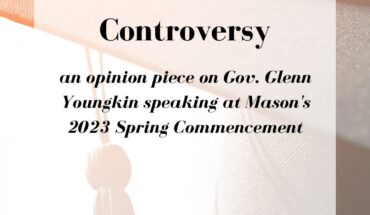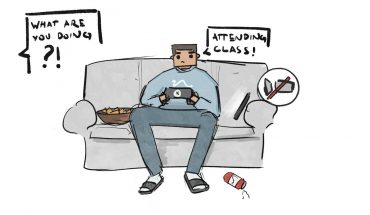BY: STEVEN ZHOU, STAFF WRITER
In the past few decades, a tremendous outcry has risen, accusing colleges and universities of indoctrinating students with a specific set of beliefs. The most recent evidence towards such indoctrination include a fascinating side-by-side comparison of history textbooks from California and Texas, and the controversy over the New York Times’ flawed and inaccurate 1619 Project making its way into school curriculum.
Implicit in these accusations is the assumption that education should provide a purely unbiased, neutral perspective. This, however, is an unrealistic expectation.
It’s a balancing act. Even in our current tough times, teachers faced such a balancing act of delivering accurate facts on the coronavirus crisis while trying to keep students from panicking. For several weeks, there were quite a few different perspectives on the situation, and it’s unsurprising that such perspectives would influence the classroom, going so far as one college speculating on a secret plot to spread the virus.
Partisan politics aside, there is no such thing as an unbiased perspective. Despite our best efforts, instructors will always (and usually, unintentionally) present information through the lens of their own perspective. Some less so than others, but, as Conor Friedersdorf of The Atlantic pointed out, even the promotion of anti-racism — which almost all parties can support — is a form of indoctrination. Even seemingly straightforward numbers, like the fatality rate of coronavirus, can be misleading when presented in a particular way to downplay or exaggerate its significance.
Studies in psychology have hinted towards the implicit bias that affects how we all perceive, interpret and understand the world. Even when I teach the methods of calculating p-values in my psychological statistics lab, I’m showing students my opinion on whether p-values are the best way to judge the importance of a study (they’re not).
It shouldn’t be surprising, then, that universities and educators may be presenting information with at least a little bias towards their own perspectives or goals. It also shouldn’t be immediately denounced as the worst thing that could possibly happen in education.
Let me first be clear: Educators can, and should, do their very best to present unbiased and neutral perspectives of the information they teach, especially when it comes to topics that are heavily debated. However, it is unrealistic to expect that the information taught in a classroom would be fully free of any biased perspectives. Nor should this be the goal.
The goal should be to prepare students to make their own inquiries. Rather than learning a specific body of knowledge, students should be taught how to collect and analyze information, consider all perspectives and make their own interpretations. The goal should be to teach students how to inquire, not what to know.
Granted, the method of inquiry requires certain foundational bodies of knowledge, so it’s not a mutually exclusive choice. But if the end goal is inquiry, then there’s no need to make a fuss about creating a completely neutral and perspective-free curriculum.
Let’s keep adding more perspectives. This is, after all, what the goal of diversity is: to create a rich learning environment filled with the often radically different perspectives from people with different upbringings, cultural backgrounds and life circumstances. Moreover, teaching students to properly inquire prepares them for the real world, where facts are muddled and sources of authority are difficult to identify. Most of us went through this just a few weeks ago, as the world was flooded with different perspectives on the coronavirus pandemic ranging from apocalyptic predictions to laughing it off as a joke.
Ultimately, it’s not introducing different perspectives that’s the problem. It’s forgetting to equip students with the tools to sift through those perspectives and dig up the answers for themselves.



